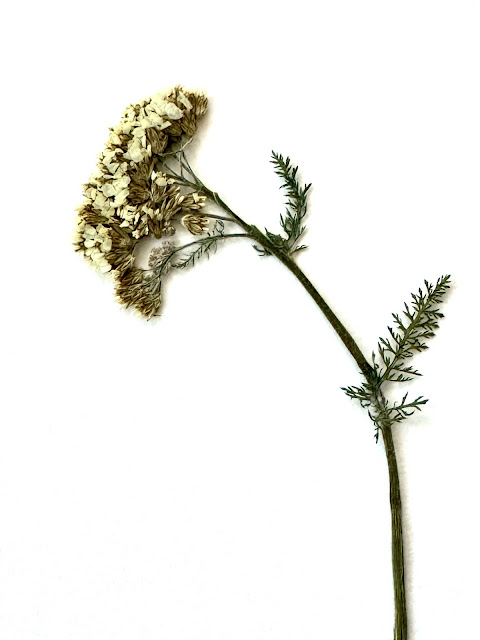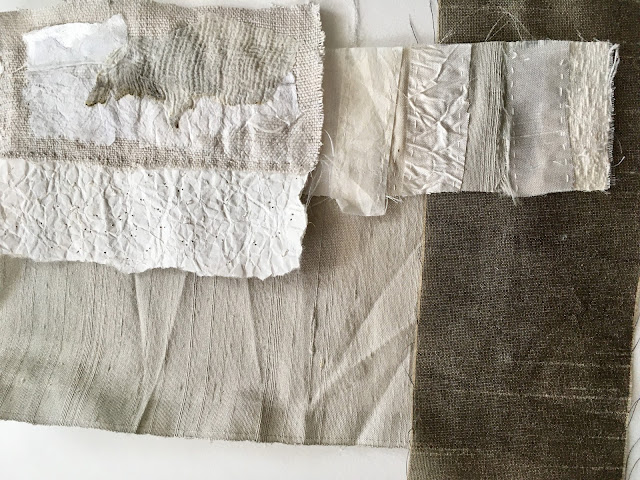it's been a thinky kind of week
a lot of time reflecting on my work, what I have been doing, and the direction I want to be going
several years ago I wrote a list of the qualities I was drawn to in creative work: colour, style, texture, design
they all still hold true for me today but I think what I am examining more now is quality
not quality in terms of construction or materials - quality in terms of the nature of it, and specifically in terms of simplicity
I have always liked my work to be on the simpler side of things, not too much embellishment, a more muted, quieter palette, subtle in texture
last year I learned about the principles of the zen aesthetic and whilst most of them resonated, "kanso" stood out most of all
"simplicity, beauty and visual elegance are achieved by elimination and omission"
the description implies a taking away, removal and though I looked at it as a form of distillation, a process I love, it felt almost as if I needed to build the work up and then take away all that was unnecessary - a bit confusing, not necessarily what was meant, but I couldn't shake it
I found this quote not long after and it seemed a better fit, in meaning as well as approach
"Things wabi sabi are understated and unassuming, yet not without presence or quiet authority"
(- Leonard Koren, Wabi Sabi for Artists, Designers, Poets & Philosophers)
That would be work I could aspire to create... but then "quiet authority" implied confidence and the belief in the completeness of the work - definitely not something I had an abundance of
and then came this:
"we favour simple expression of the complex thought"
- Rothko/Gottlieb Manifesto 1943
and that was a "put-the-book-down-and take-this-in" moment
very simple and straightforward and something I could understand at a much deeper level than any of the others
taken all together though, each of the three contributing their own unique slant, they brought me to a place where I felt comfortable enough in my choices to say
"this is all there needs to be and it is enough to say what needs to be said"
and then I was finally able to deal with the two samples that have been floating on my work deskfor more than a week as I fumbled to figure out what to do next with them
the creased silk that started me on my latest explorations laid on a creased page in my sketchbook
(thank you for that suggestion Karen Ruane, creasing the pages was a brilliant idea)
I did think briefly of adding drawn stitches such as French knots along some of the creases of the paper and whilst they may look better than good I like this page this way - it's only about the creases and so they on their own are enough
the brown silk piece inspired by the neckline of Martha's dress nagged at me for days and two nights ago I cut off all the French knots
the chain stitch references the embroidery of her dress - I don't need to include all of the other embroidery to tell it's story
and then after all that came this:
"looking for the essence in the essential"
-Mark Rothko
and my oh my
there it was and here it is
the answer to the question and a way forward
I feel as though I've been a given a license to follow my instincts, to let my desire spareness have it's day; for so long I've questioned if my work isn't too simple, or at least my desire for it
that a viewer wouldn't necessarily think it either wasn't finished or was a half-hearted effort at best
interestingly though, what I like about this thinking is that it isn't necessarily advocating for a design aesthetic that is spare or minimal rather, it's calling for there to be nothing present that isn't required
only what is essential must be present BUT everything that is essential must be
it's not just a matter of stripping things away and making plain
"the whole truth and nothing but the truth"
as I go back to the sketchbook pages above I delight in the look of them - all I want them to say is there and all the possibilities that stem from them are also there, none are crowded out nor overwhelmed
it's a reference of a place to begin


.jpeg)


.jpeg)
.jpeg)






.jpeg)






